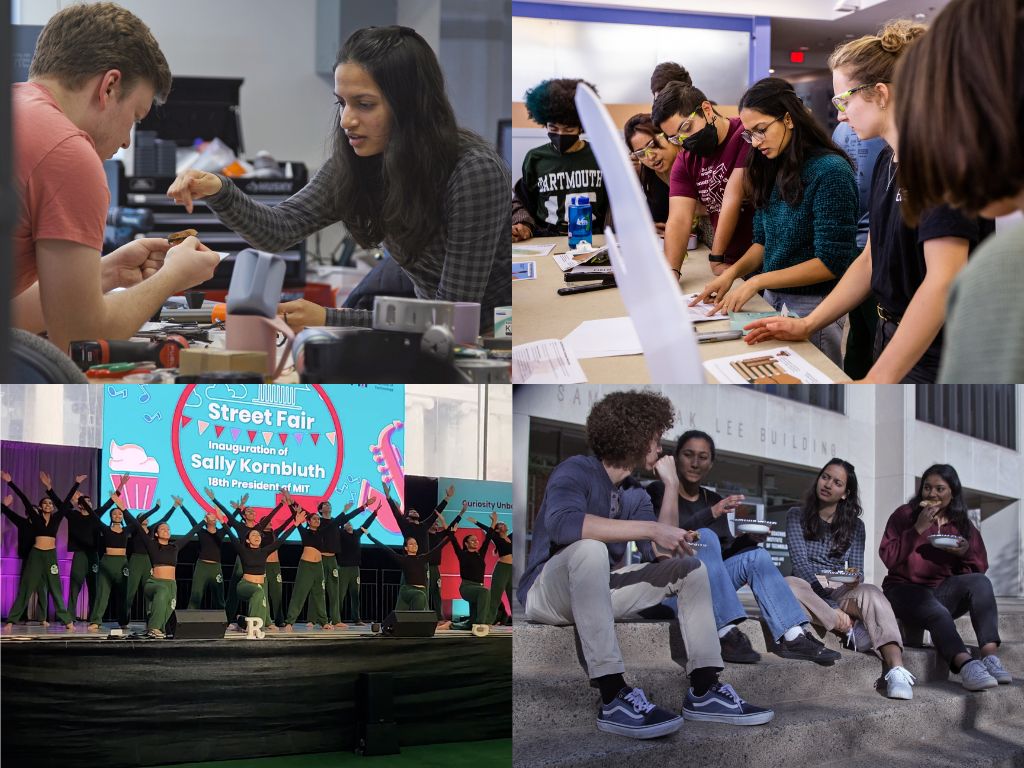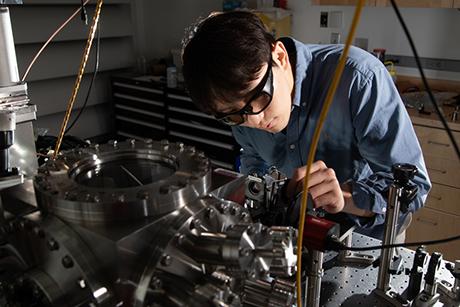Mechanical engineering with a twist: Pursuing a passion for robotics with customized major
A photo of students in colorful hardhats running across Killian Court is what first drew Sharmi Shah ’23 to the Department of Mechanical Engineering (MechE), but a desire to make the world a better place is what inspired her to pursue studies in the field and to focus on robotics.
“Coming in, I thought I wanted to study mechanical engineering, but there wasn’t much of a concrete basis behind that thinking,” she says. She debated several majors, including pre-medicine and computer science, but landed on MechE’s 2-A/6. “Course 2-A/6 is a major in the mechanical engineering department,” Shah explains. “You take the core classes, but then you also get to pick and choose from computer science and electrical engineering.”
Course 2-A is a twist on the traditional Course 2, mechanical engineering degree. By coupling the degree’s core courses with a customized curriculum, students can home in on their personal interests — such as robotics, entrepreneurship, or energy. Students can pick from a list of existing concentrations, like 2-A/6, also known as Control, Instrumentation and Robotics (CIR), or propose their own.
As a 2-A/6 major, Shah spent a year working on a robotic system named PEARL, a large sensing robot developed by the Engineering Systems Laboratory that harvests solar energy to recharge autonomous underwater vehicles (AUVs) and connect to low-Earth orbit satellite constellations for quick data transmission.
Inspired by the potential in the robotics field, she started taking more robotics classes and ended up taking most of the classes offered. In Professor Sangbae Kim’s class, 2.74 (Bio-Inspired Robotics), she and her team built a hula-hooping robot. “We got to do everything from the controls to the mechanical design and the software,” she says. In Professor Russ Tedrake’s classes (Robotic Manipulation and Underactuated Robotics), she gained more experience with optimization techniques, perception, planning, and nonlinear controls.
Shah returned to MechE as a graduate student this fall and is now working in Kim’s Biomimetic Robotics Laboratory. Biomimetics is a discipline that employs an understanding of processes from nature, biology, and the natural world to create models, materials, machines or systems that help solve complex human problems.
During her graduate studies, she expects to focus on tactile sensing work she began during her Undergraduate Research Opportunity Program project as a senior. However, she knows her path may unfold in various ways that she’s not fully aware of yet — an uncertainty she embraces.
“Not everything ends up going to plan, and that is ‘A-OK’,” she says. “You learn as you go … that thinking can apply to your career planning, or classes, but also to engineering — you try something, you try it again, you make a little progress. You keep trying.”
She’s found a supportive community in MechE, and throughout campus, particularly as a member of Mirchi, MIT's nationally-ranked Bollywood fusion dance team. She also frequents the campus makerspaces and the MechE lounge, a gathering and collaboration space for the department. Community is important to Shah. “I’m grateful for all the friends I’ve made here, and to my family … they’re my biggest support system.”
Shah says she’s excited to be returning to MIT for her graduate studies. “There’s always more I can learn … and I want to keep learning.”


